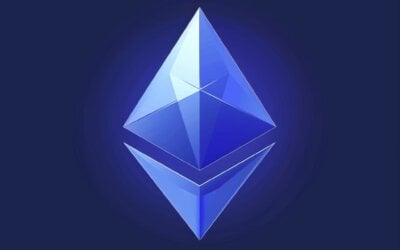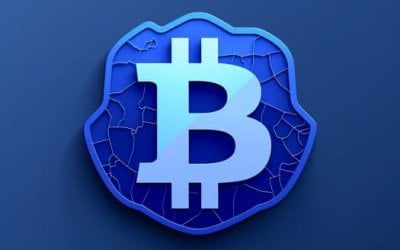The Bitcoin Halving Explained: What It Means For Bitcoin Mining

Keep up to date with Bitcoin on Bitcoin.org
Keep up to date with Ethereum news on Ethereum.org
In the bustling world, not just of finance, but now of crypto assets, a storm has been quietly brewing: the Bitcoin Halving. This event, conceptualized by none other than the elusive Satoshi Nakamoto, is arguably as monumental as the Olympics in the Bitcoin universe. It undoubtedly holds the power to shake not just your investment portfolios, but also the entire landscape of cryptocurrency mining. Journey with us as we delve into the complexities of this process and unravel what it truly means for Bitcoin mining in the coming years. We promise to make this seemingly esoteric concept digestible, whether you’re a casual enthusiast or an avid miner—because when it comes to Bitcoin Halving, ignorance is never bliss.
Ensuring consensus among all nodes, the Bitcoin halving refers to the event that occurs approximately every four years, where the number of new Bitcoins, or the crypto asset in question, created and earned by miners is reduced by half. This reduction in supply has important implications for the cryptocurrency ecosystem as it affects the balance between supply and demand. It is essential because it introduces scarcity, which can potentially impact the price of Bitcoin.
What is the Bitcoin Halving?
Through the visionary prism of its creator Satoshi Nakamoto, Bitcoin halving refers to the event that occurs every four years in the Bitcoin blockchain network, where the number of bitcoins generated—each bitcoin divisible to 100 millionths, or satoshis—is reduced by half. This event occurs after every 210,000 blocks have been mined, and there have been two previous halvings: one in 2012 and another in 2016.
To put it into perspective, assume a bitcoin miner earns three bitcoins per block after mining a day for seven days – they would end up with 21 bitcoins. However, after halving, done in order to achieve consensus among the nodes of the network, the same miner would only generate 1.5 bitcoins or a reduced by half number of satoshis per block resulting in just 10.5 BTC in total!
The Process and Its Importance
The entire concept of bitcoin, functioning within its decentralized network of nodes, relies heavily on its finite supply cap. A major reason why the Bitcoin network is considered reliable is due to the mechanism of ‘proof-of-work’ (PoW), where powerful computers compete to verify transactions and add new blocks to the blockchain.
The algorithm responsible for generating new blocks makes adjustments to ensure that a block is added approximately every ten minutes and thus enabling miners to earn rewards as part of this consensus driven process. So essentially each miner must solve complex equations using their computing power – which makes it resource-intensive.
| Halving Year | Reward Drop | Block Height | Block Remaining | Expected Halving Date |
|---|---|---|---|---|
| 2009 | 50 BTC | N/A | Infinity | N/A |
| 2012 | 25 BTC | 210,000 | 10,500,000 | November 28, 2012 |
| 2016 | 12.5 BTC | 420,000 | 5,250,000 | July 9, 2016 |
| 2020 | 6.25 BTC | 630,000 | 2,625,000 | May 11, 2020 |
| (Source: Investopedia) |
So why is Bitcoin halving so important? As the rewards for mining decrease over time, the incentive to mine new bitcoins reduces significantly. This situation, masterfully envisaged by Satoshi Nakamoto, could lead to a slower block addition rate and adversely affect transaction confirmation times.
Moreover, with Satoshi Nakamoto’s vision in mind, halving emphasizes that the supply of this crypto asset – bitcoin, is limited and finite, much like gold. The event helps control inflation and ensures that miners don’t flood the market with newly mined coins, thereby maintaining a balance in the system and achieving consensus among the nodes.
Appreciating the economics of Bitcoin mining, we realize that by having a predictable supply structure based on halving events in place, markets are more likely to respond in a predictable manner. In this scenario, investors handle their money strategically, planning the order of their investments to make the most of these patterns.
Think of it like farmers harvesting their crops – if they harvest everything at once and dump it all into the market, produce prices will plummet due to oversupply. However, with a strategy similar to that of trained economists, farmers who stagger their release of products intelligently in response to market dynamics can get better prices.
Impact of Halving on Bitcoin Mining
In money markets, particularly the cryptocurrency world, the Bitcoin halving is one of the most critical events. The impact of halving on Bitcoin mining can be significant because it directly influences miners’ rewards and, therefore, their profitability. After every 210,000 blocks (approximately four years), the block reward given to miners is reduced by half. This event helps control inflation and keeps Bitcoin valuable as a scarce resource since there are only ever going to be 21 million Bitcoins in circulation.
To illustrate the economics behind the impact of halving on Bitcoin mining, let’s consider a hypothetical scenario. Suppose there are two miners who mine bitcoins for a living. Miner A mines one block per day and receives six bitcoins as a reward (when the block reward is 12.5 BTC). On the other hand, Miner B mines one block per week but earns 84 bitcoins (when the reward is also 12.5BTC). However, after halving occurs, both Miner A and Miner B will receive 3.125 bitcoin for each new block mined, which may significantly affect their profitability within the market.
One way to counteract this potential loss could be through increased efficiency by upgrading equipment or lowering energy consumption – a strategy that involves investing time and money in order to maintain order in their operations. Another option might be to shift mining operations to areas with more affordable electricity rates or renewable energy sources.
Now that we understand how bitcoin halving can affect mining profitability, let’s take a closer look at what adjustments miners can make in response, particularly in the order they might consider different responses.
- In the last Bitcoin halving event of 2020, the block reward decreased from 12.5 to 6.25 Bitcoins.
- Post-halving, approximately 900 new Bitcoins are being mined each day compared to pre-halving’s rate of approximately 1800 Bitcoins per day.
- As per a report by Statista in 2021, since the first Bitcoin halving event in 2012, there has been an exponential increase in its price from roughly $12 to over $30,000 in 2020 after three halvings.
- The Bitcoin halving event has a significant impact on Bitcoin mining, affecting miners’ rewards and profitability. With the block reward being reduced by half every 210,000 blocks (approximately four years), miners need to adapt to maintain their profitability. This event helps control inflation and preserves the value of Bitcoin as a scarce resource with a limited supply of 21 million coins.
To illustrate the impact, consider two hypothetical miners: Miner A mines one block per day and receives six bitcoins as a reward, while Miner B mines one block per week and earns 84 bitcoins. However, after halving occurs, both miners will receive only 3.125 bitcoins for each new block mined, which can significantly affect their profitability.
Miners can respond to this potential loss by increasing efficiency through equipment upgrades or reducing energy consumption. They may also consider relocating mining operations to areas with more affordable electricity rates or utilizing renewable energy sources.
Understanding how Bitcoin halving affects mining profitability allows miners to make necessary adjustments to maintain their success in the industry.
Adjustments for Miners
After considering the economics of the situation, miners need to adjust their strategies and operations after halving events to continue earning revenue from mining. First and foremost, they need to ensure their mining rigs are efficient enough to compete with others effectively within the market. Upgrading equipment for increased computing power and energy efficiency can reduce costs and increase hash rates.
Another adjustment that miners can make would be switching from traditional power sources like coal or natural gas to sustainable energy sources like solar or hydroelectric energy. As sustainability becomes a bigger factor in the economics of mining, this has become an increasing trend over time.
Ultimately, understanding the markets is crucial for miners who need to diversify their operations and not rely solely on rewards from mining activities. They can branch out into other activities such as selling bitcoins directly on exchanges or trading them for other currencies, which can help them survive in the long run.
Future of Home Mining
As the cryptocurrency market continues to gain traction, the rise in home mining has been inevitable. Bitcoin mining technology is becoming increasingly sophisticated, which means more individuals can begin home mining operations and contribute to furthering the security of the network. However, with bitcoin halving dynamically introduced every 210,000 blocks, mining rewards are cut in half. This could present a challenging economic context for smaller home miners who may not have the funds or strategy to keep up with expanding technology.
For example, imagine a university student who decides to venture into the world of stocks and starts mining Bitcoin from their dorm room using their personal laptop as a trade tool. While it works initially, as Bitcoin mining becomes more challenging and rewarding at professional levels, this individual, now a nascent trader, may find it challenging to keep up. Just as tracking indicators in the stock market, understanding complexities in Bitcoin mining is crucial. As such, while home mining may be feasible currently, the halving effects may render it impractical eventually.
Economical Significance of the Bitcoin Halving
Bitcoin halvings signify a decrease in miner profitability as previously received rewards are divided by two, very much like a drastic drop in stocks for traders. These events incentivize miners, also often referred to as digital traders, to continue securing the network through transaction validation but also increase the cost of maintaining mining hardware infrastructures since rewards reduce by half.
To compensate for the reduced rewards, miners must increase the efficiency of their systems or find alternative revenue streams like charging higher transaction fees or switching to other cryptocurrencies altogether. These are similar to the tools and strategies that traditional stock traders utilize when responding to fluctuations in the market.
Moreover, historical data reveals that each halving event ushers in a period of bullish activity as supply creation decreases while demand remains constant, if not increasing. This phenomenon is relatively similar to the surge in stocks when a company shows growth potential.
| Halving Date | Block Height | Block Reward |
|---|---|---|
| Nov 28 2012 | 210000 | 50 |
| Jul 09 2016 | 420000 | 25 |
| May 11 2020 | 630000 | 12.5 |
| Expected between Mar-May 2024 | 840000 | 6.25 |
Think of halving as progressive scarcity being introduced into the Bitcoin ecosystem by slashing rewards in half. Just like a trader would gradually invest more into profitable stocks, Bitcoin is undergoing slow and continuous transformation that strengthens its integrity.
While halving events predictably drive up market sentiments, there’s debate on whether they play a role in setting price floors or ceilings. Detractors argue that cryptocurrency speculation creates artificial price runs and drops, similar to the speculative trades in stocks, while supporters point out that each halving progressively increases scarcity, driving demand and powering price hikes.
The prospective impact of future halvings on mining profitability and coin valuation makes them a critical aspect of the Bitcoin ecosystem, much like economic indicators are crucial to stock traders.
Understanding the economic significance of bitcoin halving can help individuals, much like stock traders, predict possible outcomes and take advantage of opportunities to boost their investments in cryptocurrencies.
Scarcity and Supply Dynamics
Bitcoin mining involves verifying transactions on the Bitcoin network using powerful computing equipment, akin to investment tools used by stock traders. The activity is incentivized by the reward system: miners receive newly generated bitcoins for each verified transaction. However, the total number of bitcoins that can ever be generated is limited to 21 million. This inherent scarcity plays a critical role in Bitcoin’s supply and demand dynamics and is also central to understanding the concept of the Bitcoin halving.
Picture a game of musical chairs with a set number of seats but with more players joining every round – there comes a point where the supply of chairs is insufficient, and players are forced out of the game without one, just as traders are forced out when stocks are scarce.
Bitcoin Halving and Market Reaction
Every 210,000 blocks (approximately four years), Bitcoin undergoes a “halving” event. During this event, the reward for mining new blocks on the Bitcoin network is cut in half. The latest halving occurred in May 2020, reducing miner rewards from 12.5 BTC per block to 6.25 BTC. This mechanism was designed to ensure that the total number of bitcoins in circulation doesn’t exceed 21 million, just as it is crucial for traders to keep track of shares in circulation when trading stocks.
To put things into context, imagine you’re a miner, like a trader in the stock market, receiving 12.5 BTC as a reward for one block mined. Just as the trade of stocks, the success in Bitcoin mining relies on getting the strategies right and staying updated with market trends.Following halving, your earnings would drop to 6.25 BTC per block mined. It is worth noting that this decrease in earnings might affect your profit margin, especially if you hold long-term positions in mining Bitcoin.
Past events have shown that halvings tend to increase the price due to reduced supply, while demand remains intact or increases. Careful research into the previous halving events in 2012 and 2016 reveals that prices experienced an upward rally within a year, essentially acting as catalysts for price growth.
It’s important to note that past performance is not indicative of future results as multiple factors impact market reactions. Therefore, while developing trading strategies, it’s crucial to consider there’s no guarantee that prices will increase after a halving event.
Having grasped what halving means and how it impacts supply and demand dynamics, let’s dive deeper into how the market reacts to halving events and positions itself for potential profit.
Consider a party where each guest brings unique treats to enjoy. Every four hours, the host announces that they’ll only offer half of the serving size previously offered. What will be the reaction of the hungry guests? Similar speculative instincts can drive the Bitcoin market post-halving.
Before we delve into the market reactions after halving, it’s essential to keep in mind that as with any decentralized currency, Bitcoin’s price is subject to volatility due to numerous factors such as macroeconomic policies, investor sentiments, and unforeseen global events. Thorough research can help craft more informed and robust trading strategies to navigate this uncertainty.
| Halving Year | Blocks Mined | Block Reward | USD Price (Approx.) |
|---|---|---|---|
| 2012 | 210,000 | 25 BTC | $12 |
| 2016 | 420,000 | 12.5 BTC | $650 |
| 2020 | 630,000 | 6.25 BTC | $9,000 |
Predicting Bitcoin prices is notoriously difficult and varies depending on who you’re asking. Various experts have different opinions, which range from immense growth forecasts to more conservative estimates, about what the future holds for Bitcoin after halving.
According to Pantera Capital, Bitcoin is likely to surge to a high of $115k before stabilizing at around $80k. However, Nomura holdings predict that Bitcoin could fall below its previous low of $3k or further post-halving due to significant price over recent years leading up to it.
It’s wise to keep an open mind while interpreting these predictions and avoid letting them drive rash decisions without aligning them with your personal risk tolerance and investment strategy.
1. What is the Bitcoin halving?
The Bitcoin halving is a significant event that occurs approximately every four years in the Bitcoin network. It refers to the reduction of the block reward given to miners for successfully validating transactions and adding them to the blockchain. During the halving, the reward is cut in half, hence the term “halving.” This mechanism is programmed into the Bitcoin protocol to control the supply of new Bitcoins entering circulation and maintain scarcity. By reducing the rate at which new Bitcoins are created, it ensures that there will only ever be a limited number of Bitcoins available. The halving is crucial because it plays a vital role in controlling inflation and maintaining the value of Bitcoin as a decentralized digital currency.
2. How often does the Bitcoin halving occur?
The Bitcoin halving occurs every 210,000 blocks, which roughly translates to approximately every four years. This mechanism is built into the Bitcoin protocol to control the supply of new Bitcoins entering circulation. By reducing the block reward by half, the halving event ensures that the total supply of Bitcoins will eventually reach its maximum limit of 21 million coins. This event’s entrenched predictability allows traders to strategize their positions and profit from potential price fluctuations. This periodic reduction in mining rewards serves as a crucial economic incentive for miners and helps maintain the scarcity and value of Bitcoin over time.
3. When is the next Bitcoin halving?
The next Bitcoin halving is scheduled to occur on May 14, 2024. The Bitcoin halving event takes place approximately every four years, or after every 210,000 blocks are mined. During the halving, the block reward for miners is reduced by half, resulting in a decrease in the rate at which new Bitcoins are created. This mechanism is implemented to control inflation and ensure scarcity in the Bitcoin ecosystem. As a result, the next halving will have a significant impact on the supply and demand dynamics of Bitcoin, potentially leading to increased prices and market volatility.
4. Why does the Bitcoin halving matter?
The Bitcoin halving is a significant event in the world of cryptocurrency that occurs approximately every four years. During this event, the number of new Bitcoins created and earned by miners is cut in half. This reduction in supply has several important implications. Firstly, it creates scarcity, driving up demand for existing Bitcoins and potentially increasing their value. Secondly, it helps to maintain the integrity of the Bitcoin network by ensuring that new coins are not produced too quickly. Lastly, the halving serves as a built-in mechanism to control inflation, as the rate at which new Bitcoins enter circulation slows down over time.
5. What impact does the halving have on Bitcoin’s supply?
The halving event in Bitcoin refers to the reduction of the block reward given to miners for successfully adding a new block to the blockchain. This reduction occurs approximately every four years and has a significant impact on Bitcoin’s supply. When the halving takes place, the number of new Bitcoins created and introduced into circulation is cut in half. This reduction in supply helps maintain scarcity and ensures that Bitcoins are not created too quickly, thus preserving their value over time. As a result, the halving event plays a crucial role in controlling inflation and maintaining the long-term sustainability of Bitcoin as a digital currency.
6. How does the halving affect Bitcoin miners?
The halving is a significant event in the world of Bitcoin mining. When the halving occurs, the reward for successfully mining a block is cut in half. This means that miners receive fewer Bitcoins for their efforts. While this may seem like a negative impact on miners, it actually serves an important purpose. By reducing the reward, the halving helps to control the supply of new Bitcoins entering the market, ultimately leading to scarcity and increased value. As a result, miners are incentivized to continue mining despite receiving fewer rewards, as they anticipate the potential for higher profits in the long run. Additionally, the halving encourages miners to improve their efficiency and invest in more advanced mining equipment to maintain profitability.
7. Can the halving affect the price of Bitcoin?
Absolutely! The Bitcoin halving can indeed have a significant impact on its price. The halving is an event that occurs approximately every four years, where the number of new Bitcoins generated per block is cut in half. This reduction in supply creates scarcity and increases the demand for Bitcoin. As a result, the price tends to rise as more people compete to acquire a limited number of coins. Additionally, the halving event often generates excitement and media attention, attracting new investors and driving up demand even further. Therefore, it’s safe to say that the halving can have a substantial influence on the price of Bitcoin.
8. Is there a predetermined number of Bitcoin to be produced through halvings?
Yes, there is a predetermined number of Bitcoin to be produced through halvings. The concept of halving in the Bitcoin network refers to the reduction of the block reward given to miners for successfully adding a new block to the blockchain. This reduction occurs approximately every four years and is programmed into the Bitcoin protocol. The initial block reward was set at 50 Bitcoin when Bitcoin was first created in 2009. Through halvings, this reward is cut in half, leading to a decrease in the rate at which new Bitcoins are introduced into circulation. The total number of Bitcoins that can ever be created is capped at 21 million, and halvings play a crucial role in gradually reaching this limit.
9. Are there any risks or challenges associated with the Bitcoin halving?
Yes, there are indeed some risks and challenges associated with the Bitcoin halving. One of the main risks is the potential for a temporary decrease in mining profitability. As the block reward is cut in half during the halving event, miners may find it less economically viable to continue their operations, leading to a decline in the overall hash rate of the network. This could potentially result in slower transaction processing times and increased fees until the network adjusts. Additionally, there is a risk of increased price volatility as market participants anticipate and react to the halving event. However, these risks are often short-term in nature, and over time, the halving mechanism is designed to promote scarcity and long-term value appreciation for Bitcoin.
10. How can investors prepare for the upcoming Bitcoin halving?
Investors can prepare for the upcoming Bitcoin halving by adopting a strategic approach that takes into account the potential impact on the market. Firstly, they should diversify their investment portfolio to include other cryptocurrencies and assets, reducing their reliance on Bitcoin alone. Additionally, investors should closely monitor market trends and stay updated with the latest news and analysis surrounding the halving event. This will enable them to make informed decisions and potentially capitalize on any price fluctuations or opportunities that arise. Lastly, it is advisable for investors to consult with financial advisors or experts in the cryptocurrency field to gain valuable insights and guidance specific to their individual investment goals and risk tolerance. By taking these proactive steps, investors can position themselves favorably ahead of the Bitcoin halving and potentially maximize their returns.
Where to buy cryptocurrency in Canada and US?
Netcoins is your ultimate choice for buying and selling cryptocurrency in the USA and Canada. Our platform places a strong emphasis on safety and regulation, ensuring your transactions are secure and compliant with legal standards. Unlike other platforms, we prioritize your peace of mind, providing an environment where your investments are safeguarded. Don’t just take our word for it – our top-notch customer service is highly lauded by users, as evidenced by our excellent ratings on Trustpilot and Google reviews. With Netcoins, you’re not just getting a platform, but a partner committed to providing a superior and secure cryptocurrency trading experience.
Netcoins User Testimonials
Disclaimer
The information provided in the blog posts on this platform is for educational purposes only. It is not intended to be financial advice or a recommendation to buy, sell, or hold any cryptocurrency. Always do your own research and consult with a professional financial advisor before making any investment decisions.
Cryptocurrency investments carry a high degree of risk, including the risk of total loss. The blog posts on this platform are not investment advice and do not guarantee any returns. Any action you take based on the information on our platform is strictly at your own risk.
The content of our blog posts reflects the authors’ opinions based on their personal experiences and research. However, the rapidly changing and volatile nature of the cryptocurrency market means that the information and opinions presented may quickly become outdated or irrelevant. Always verify the current state of the market before making any decisions.
Related Posts
How The Runes Protocol Can Revolutionize Memecoins on the Bitcoin Blockchain
How The Runes Protocol...
Ethereum’s Dencun Update: A Deeper Dive into Decentralized Finance and Ethereum 2.0
Ethereum's Dencun...
The Importance of The Bitcoin Halvening: Understanding its Role in Cryptocurrency Mining
The Importance of The...
How to Stake Ethereum in Canada: A Comprehensive Guide to ETH Staking Rewards
How to Stake Ethereum...
ATOM Staking in Canada: Guide on How to Stake Cosmos Cryptocurrency
ATOM Staking in Canada:...
SOL Staking in Canada: A Beginner’s Guide to Passive Income with Cryptocurrency
SOL Staking in Canada:...
Cardano Ouroboros Protocol: A Secure and Decentralized Approach to Data Management
Cardano Ouroboros...
Can Canadians Still Use CoinEx Crypto Exchange in 2024?
Can Canadians Still Use...
Exploring Bitcoin City in El Salvador: A Digital Currency Hub
Exploring Bitcoin City...
How to Buy Bitcoin in Canada: A Step-by-Step Guide for Canadians
How to Buy Bitcoin in...
Bittrex in 2024: Can Canadians Still Use the Cryptocurrency Exchange?
Bittrex in 2024: Can...
Understanding the ERC 404 Standard: An Ethereum Blockchain Protocol
Understanding the ERC...










